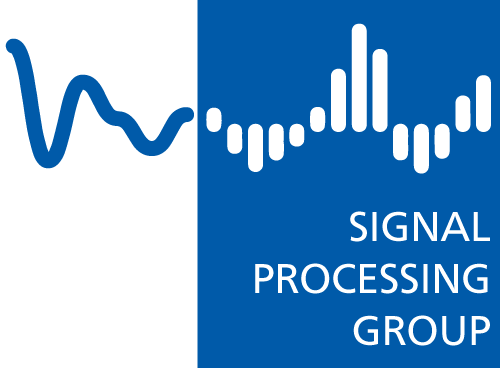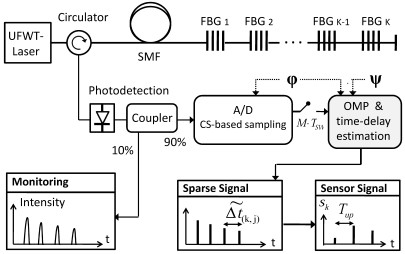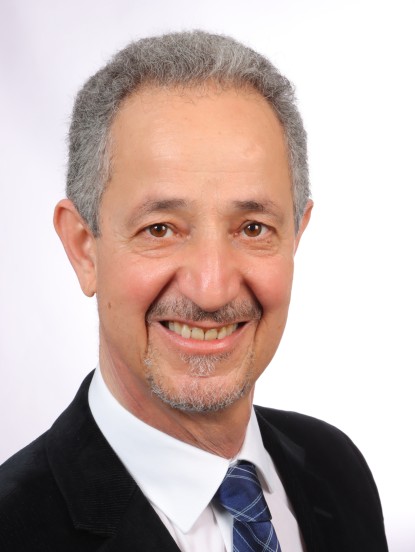Introduction
Smart structures are known for their ability to sense their environment and to appropriately react in an automated way. In this context, fiber sensors embedded in composite materials play a key role owing to their distinct features including robustness, low cost or low weight. They can be applied to a variety of applications such as structural monitoring, chemical sensing or medical applications.
Our main research interest is to investigate the applicability of sparse signal processing and compressed sensing methods for impairment monitoring using fiber sensing systems based on optical time- and frequency-domain reflectometry.
Compressed Fiber Sensing Using Wavelength-Swept Lasers
Fiber Bragg gratings (FBGs) are periodic or non-periodic variations of the refractive index. They are imprinted into the core of an optical fiber and reflect light at a certain wavelength. The grating period determines this reflection wavelength. External impairments such as strain or temperature cause the grating to expand or contract and, thus, they cause a change in the reflected wavelength. It is possible to infer on the type and quantity of external impairments by measuring this change. When a wavelength-swept laser is used at a fixed sweep rate, the shift in the reflected wavelength is directly related to the time-delay at which the reflected signal is received. Therefore, high-accuracy time-delay estimation allows for high precision measurements of impairments acting on the fiber.
The aim of our research is to investigate the applicability of sparse signal processing methods, including compressed sensing, for practical fiber sensing systems. This will yield improved accuracy, reduced sampling rates and a lower amount of data acquired.
Constant monitoring of time-varying perturbations requires high sampling rates and produces a vast amount of data. Compressed sensing can be used to tackle these issues. By developing a proper signal model, it is possible to identify an appropriate dictionary that can be used for compressed sensing and sparse signal processing.
Contact: For more information on this research project contact Prof. Abdelhak M. Zoubir.






